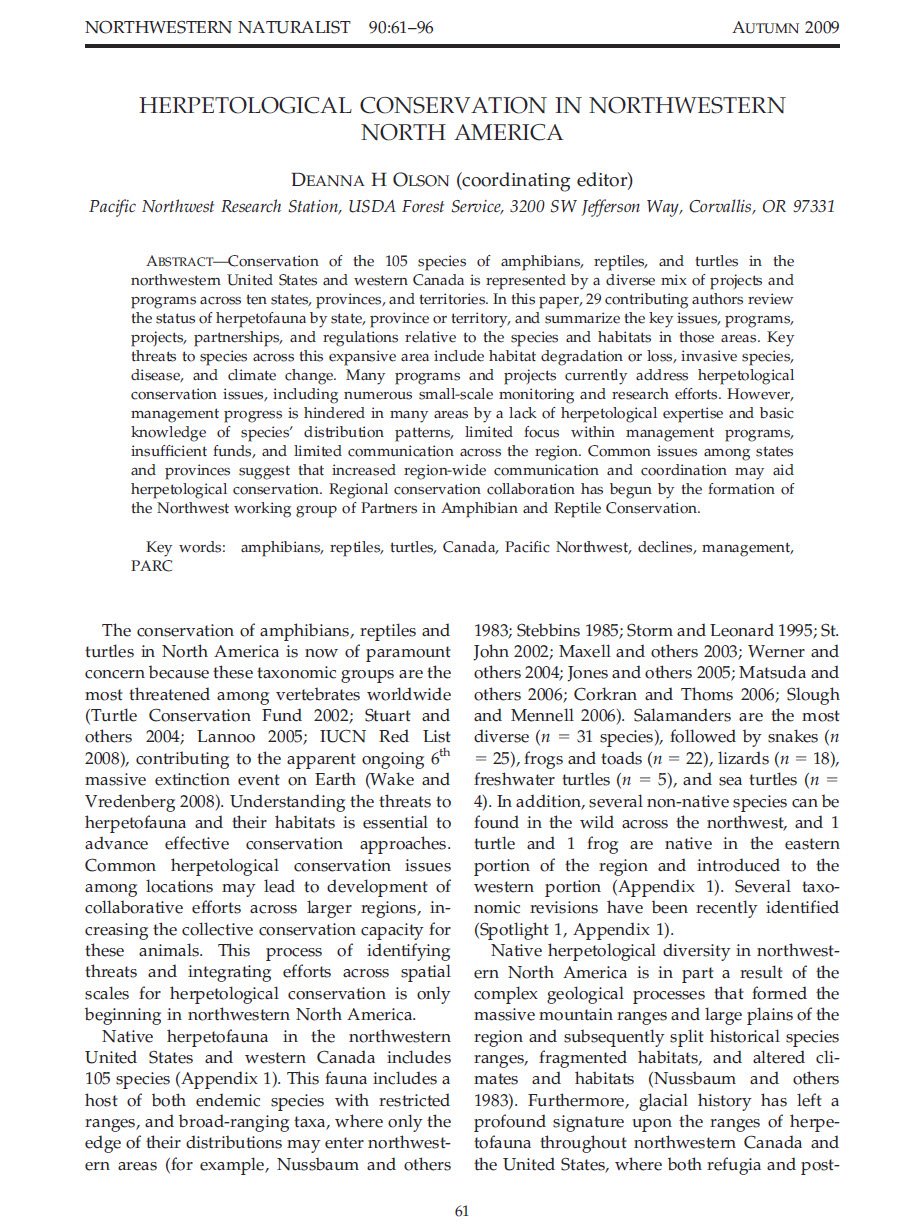The USGS Amphibian Research and Monitoring Initiative in the Pacific Northwest
http://www.fs.fed.us/pnw/pubs/journals/pnw_2009_Olson003.pdf
Abstract/Summary
Conservation of the 105 species of amphibians, reptiles, and turtles in the northwestern United States and western Canada is represented by a diverse mix of projects and programs across ten states, provinces, and territories. In this paper, 29 contributing authors review the status of herpetofauna by state, province or territory, and summarize the key issues, programs, projects, partnerships, and regulations relative to the species and habitats in those areas. Key threats to species across this expansive area include habitat degradation or loss, invasive species, disease, and climate change. Many programs and projects currently address herpetological conservation issues, including numerous small-scale monitoring and research efforts. However, management progress is hindered in many areas by a lack of herpetological expertise and basic knowledge of species’ distribution patterns, limited focus within management programs, insufficient funds, and limited communication across the region. Common issues among states and provinces suggest that increased region-wide communication and coordination may aid herpetological conservation. Regional conservation collaboration has begun by the formation of the Northwest working group of Partners in Amphibian and Reptile Conservation.
Publication details
| Published Date: | 2009 |
| Outlet/Publisher: | Northwestern Naturalist 90: 66 |
| Media Format: |
ARMI Organizational Units:
Rocky Mountains, Northern - BiologyTopics:
DiseaseDrought
Fire
Invasive Species
Management
Monitoring and Population Ecology
Quantitative Developments
Species and their Ecology
Stressors

